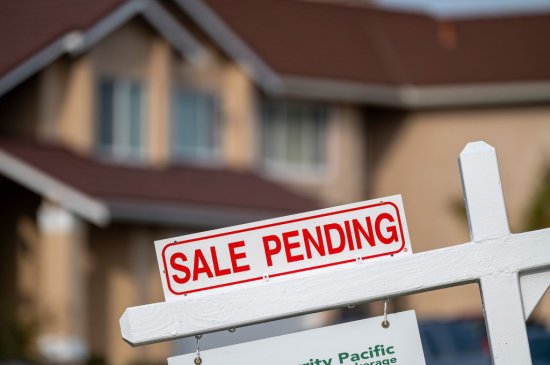
Waiting for mortgage rates to fall may be a losing tactic.
It’s not a fun time to try and buy a house.
Mortgage rates have slipped since last fall, but remain significantly higher than they’ve been for more than a decade. There aren’t a lot of properties on the market, either. That’s partly because homeowners fortunate enough to lock in low rates don’t want to move and pay a higher one.
The Federal Reserve, whose decisions influence mortgage rates, has indicated that interest rates have peaked. But even if they dip as expected, there’s little indication the housing market is going to get better for buyers anytime soon, economists say.
[time-brightcove not-tgx=”true”]“If you hyper-fixate on mortgage rates, you’re not going to do anything other than drive yourself completely insane,” says Jacob Channel, senior economist at Lending Tree.
More From TIME
Read More: Why There Are No Houses to Buy In Many U.S. Metro Areas.
For prospective buyers, it’s hard not to obsess over how much money you could have saved if you bought just two years ago. Someone borrowing $500,000 at today’s mortgage rates of around 6.6% would pay $1,000 more per month than someone borrowing $500,000 in Feb. 2021, when rates were around 3%. But the super low mortgage rates of 2020 and 2021—indeed, the sub-4% mortgage rates that marked much of the last decade—are long gone.
“We’re in an era where mortgage rates will be elevated,” says Lisa Sturtevant, chief economist of Bright MLS, a multiple listing service. “We’re not going to see rates down at 3% in our lifetimes.” Sturtevant, like many other economists, believes that mortgage rates should decline slowly this year, but that they will remain above 6% for the remainder of 2024. That’s still an improvement from the fall of 2023, when they reached 8%.
Rates are influenced by a number of factors. Lenders look at the interest rates set by the Federal Reserve, which determine what it costs banks to borrow overnight from other banks. They also look to Federal Reserve press conferences, like the one on Jan. 31, to gauge what central bankers think about the direction of the economy. Mortgage rates are also influenced by the 10-year Treasury yield—essentially the return on a bond sold by the federal government—because mortgages are packaged and sold into securities that compete with these government bonds.
The Federal Reserve has been hesitant to lower interest rates because it doesn’t want a return to runaway inflation. In its press conference on Jan. 31, the Fed said it planned to hold rates steady for the time being. “The economic outlook is uncertain, and the Committee remains highly attentive to inflation risks,” the Federal Open Market Committee said in a statement.
Even if mortgage rates fall, there’s not much reason for prospective homebuyers to sit out the market, economists say. That’s because the U.S. has a housing shortage that experts expect will keep prices elevated. Builders, hurt by the Great Recession, have been slow to construct new homes at the same time that existing homeowners are staying put to hold on to their low mortgage rates. Baby Boomers are living longer and staying in their homes. Meanwhile, millennials who finally recovered financially from the Great Recession are rushing into the housing market, creating more demand than there is supply. “I do think we’re going to be in this low inventory environment until at least 2030,” says Sturtevant.
Read More: How to Buy A Home in a Brutal Housing Market.
As elevated mortgage rates make borrowing more expensive, housing is getting pricier, too. Nationally, home prices rose 5.14% in Nov. 2023 compared to Nov. 2022, according to the S&P CoreLogic Case-Shiller Home Price Index. Over the past four years, prices have risen by nearly 50% nationally.
Economists say there should be more houses for sale in 2024 than in the past year or two. Some turnover is inevitable: people get new jobs, or want to live in a new city and have to sell their homes. Builders have picked up the pace of new housing construction, bringing more inventory on the market. Current mortgage rates aren’t actually that high by historical standards—mortgage rates were above 10% for most of the 1980s and above 6% for much of the 1990s.
But when economists talk about more homes coming onto the market, they’re talking about a trickle, not a flood. Buyers are still getting used to the new normal, wishing for the days of low interest rates and plentiful inventory. But those days are long gone.
“It’s tempting to think what would have happened if you bought when mortgage rates were 3%,” says Channel. “But that’s not all that different from wondering what would have happened if you bought Amazon stock in 1999. It’s wistful nostalgia for halcyon days.”